Are you looking to create a professional splash page for your WordPress site? But do you want to do this without compromising your site’s performance, and without the need for coding skills?
There are a number of limitations when it comes to traditional methods of creating a splash page. You may struggle with issues like technical complexity, or you may have slow loading times, impacting the success of your splash page. But there are solutions to this.
In this article, we’re going to give you an in-depth comparison between splash pages and landing pages, along with practical, no-code solutions for creating splash pages that even WordPress beginners can implement.
Splash Pages vs. Landing Pages: Understanding the Difference
Splash pages can be seen more as temporary screens, which usually have minimal content. Their main focus is primarily on creating a first impression or to relay important information, for example, making an announcement or requesting age verification. Landing pages, on the other hand, are conversion-optimized destination pages designed to drive specific actions.
Splash pages typically appear before accessing the main site and disappear after interaction, whereas landing pages remain accessible and often serve as standalone ‘conversion points’. Additionally, while landing pages typically feature a combination of informative (content) elements and eye-catching visuals, splash pages are designed to be mainly visual and attention-grabbing.
However, both can be effective at different points in the user journey. Splash pages, for example, can be used for dramatic introductions, age verification, or sharing important information. Landing pages are more effective for targeted campaigns and conversions.
Understanding the right context for each page type is crucial for maximizing their effectiveness. Use splash pages when you need to make time-sensitive announcements, implement regulatory requirements like age verification, or create dramatic product introductions that build anticipation. Their temporary nature makes them perfect for these scenarios. Reserve landing pages for your targeted marketing campaigns and specific conversion goals, where you can include detailed value propositions, testimonials, and clear call-to-action elements. The difference in user engagement is significant.
Tam Vincent, Content Manager at FooPlugins
For a good example of a landing page, take a look at the travel SaaS website Woodpecker. The page makes use of several CTAs, includes social proof, and focuses on the benefits for the user.
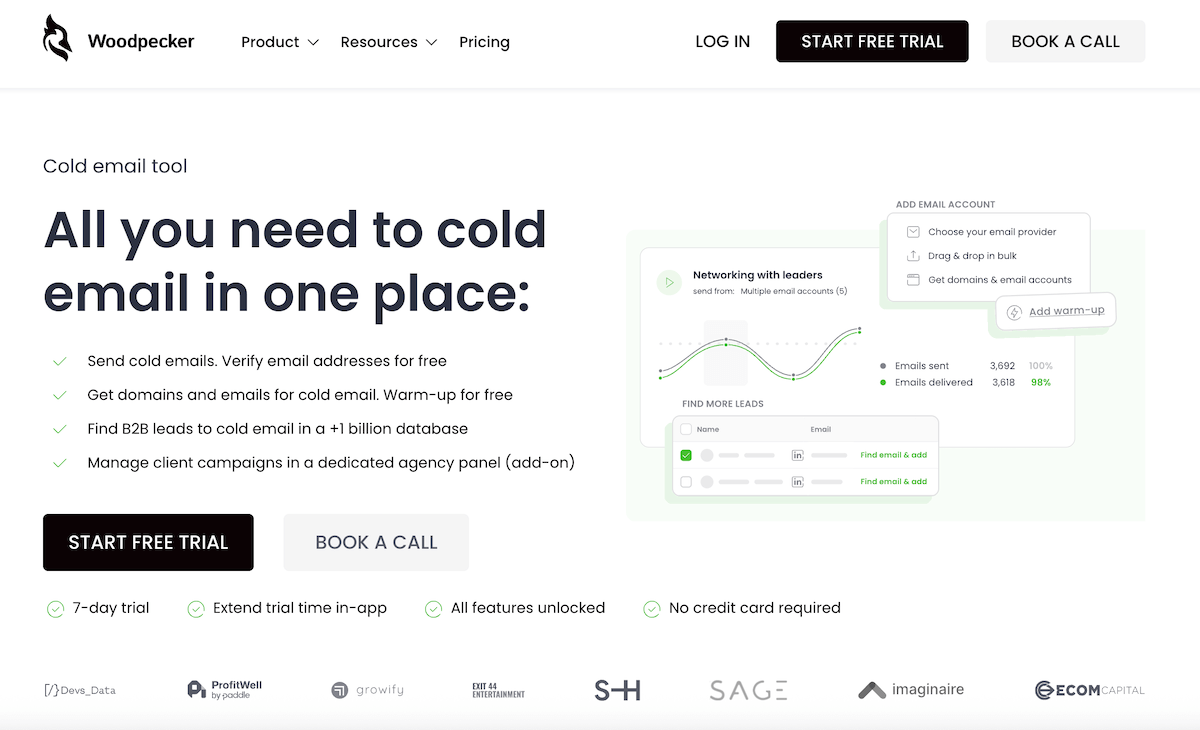
By contrast, the splash page for Canadian craft beer brand Craft Beer Market is minimal in content and is designed to drive conversions through a visual impression rather than with many different conversion elements working together.
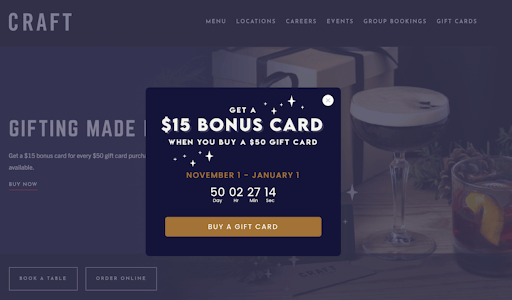
How to Create a No-Code Splash Page With FooConvert Popup Widgets
One of the main uses for splash pages is to draw attention to announcements. In this sense, FooConvert is a great plugin to design a splash page without having to use code. FooConvert is a conversion-focused plugin, with pre-designed widgets that you can use for various purposes.
For example, FooConvert’s flyout and popup widgets specifically allow you to ‘overlay’ a splash page on top of another page, as per the example from the website above. With the plugin, you can create different types of splash pages based on purpose. This could include email collection, a promotional announcement, age verification, or directing users to specific content.
FooConvert has a mobile-responsive design, which is a critical requirement for effective splash pages in today’s mobile-first environment. On top of this, creating a splash page with FooConvert avoids some of the common SEO and performance pitfalls associated with traditional splash pages, such as:
- They load in a way that can be difficult for search engines to read.
- They exist as their own page, meaning it gets classified by search engines as thin content, which is bad for SEO – FooConvert loads your splash pages as part of an existing page.
FooConvert includes widget analytics capabilities for tracking splash page performance and these numbers update in real-time directly within the plugin settings of the WP dashboard. You can see information about views, clicks, events and conversions, giving you an understanding into how your widget is performing. This means you can make data-driven decisions to maximize the effectiveness of your splash pages.
FooConvert is simple to use and it’s easy to get started. You can try the 7-day free trial, and then install the plugin and begin creating your own splash pages.
The Best WordPress Conversion Plugin
FooConvert is an easy-to-use WordPress conversions plugin, draw attention, increase sales and engagement.
Customizing Your Splash Page Design With Ready-Made Templates
There are various ways you can use FooConvert to create your splash page. The popup widget can be used for a popup, centred splash page, while the flyout can be used for an overlay page that opens from the side of the screen. Let’s look at how to create a splash page with the popup (it works the same with the flyout widget, though, if that is your preference).
- Navigate to the Popup tab under FooConvert in your WordPress dashboard and click on ‘Add New Popup’. You can then select one of the predesigned templates, or create your own custom popup.
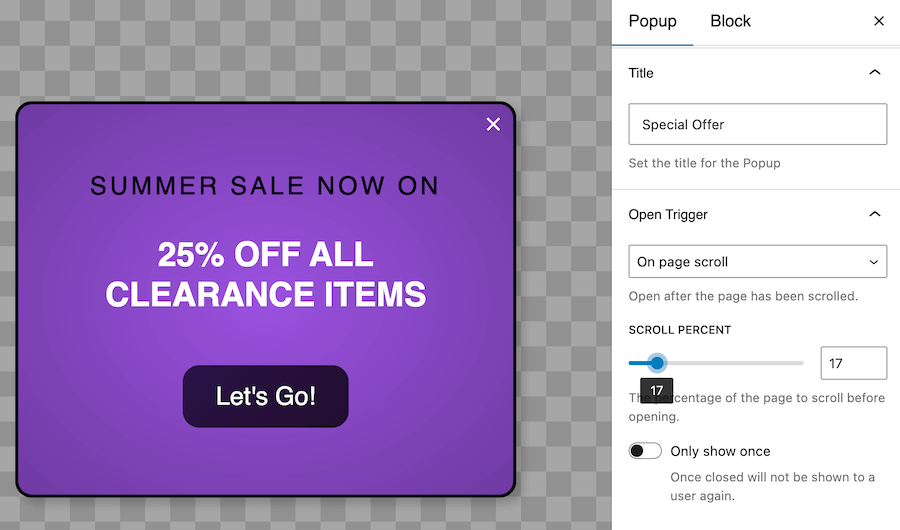
- Your template can then be customized to suit the aesthetic of your site. For example, you can edit or add content such as text and images. You can incorporate custom buttons for CTAs, and change the border and radius of the splash page overlay. For the flyout option, you can also change the positioning of the widget.
- You can further customize the widget by adjusting the colors and borders, or using different fonts (by adding Google Fonts to FooConvert). There are also options to change the close icon, or use a background image.
Setting Perfect Timing: Display Rules and Triggers for Maximum Impact
Once you have designed your popup, click ‘Display Rules’, which allows you to set where your splash screen will be displayed (and who can see it).
- For example, you can display your splash page only on a specific page, such as your home screen, or across your entire site. FooConvert can identify post-types on your website, giving you more control over where your widgets can be displayed.
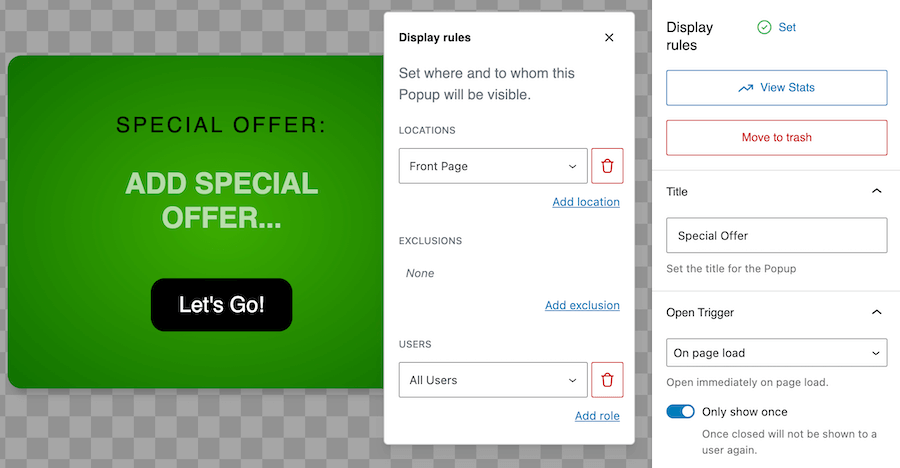
- You can also choose to show the splash page only to subscribers or only logged-out users, allowing you to achieve different outcomes from your splash page for different segments of your website audience.
In the Block settings for the widget itself, you can also set Trigger options, which define when the splash screen popup or flyout is displayed to users. There are various options available to you, for example, you can display your widget on page load, page scroll (after a certain percentage of the page has been scrolled), anchor click, element visible, or exit-intent (when a user signals they might exit the page).
With these settings you can target a particular audience at a specific point in their user journey. This gives you more control and helps you to maximize on your conversions.
Optimizing Your Splash Page for Mobile and Site Performance
When building your splash pages, consider that you may encounter some unique technical challenges. Since splash pages are often the first thing visitors see, performance issues here can have an outsized impact on UX, so you need to ensure that your page is optimized.
Mobile performance bottlenecks for splash pages come primarily from technical issues on your website. However there are specific technical steps that you can implement for splash page optimization:
- Minimize JavaScript: Reducing JavaScript lowers page load time by decreasing the amount of code the browser needs to download, parse, and execute.
Reduce CSS complexity: Simplifying the CSS improves rendering speed by making style calculations faster and reducing file size. - Optimize images: Compressing and resizing images reduces their file size and removes unnecessary metadata, resulting in quicker load times without sacrificing visual quality.
- Implement caching or a CDN: Caching and CDNs deliver content from servers closer to the user, which can decrease latency and improve page load speed.
It’s a good idea to use site performance monitoring tools like GTmetrix or Google PageSpeed Insights to establish a baseline for improvement. Once you make changes or introduce optimizations, run through your tests periodically to ensure that you are maintaining a high performance level.
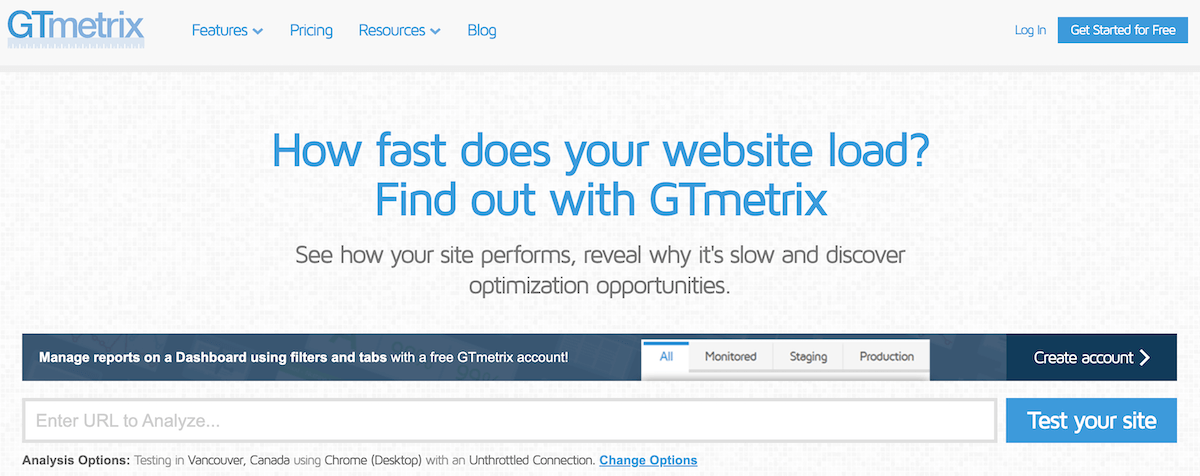
FooConvert is a noteworthy solution to creating splash pages, while also addressing these technical concerns. With its mobile-responsive widgets, you can maintain performance while delivering engaging splash page experiences.
Additionally, FooConvert’s analytics can help monitor the relationship between splash page performance and conversion rates. For example, if you see bounce rates decreasing from your splash page in the FooConvert analytics dashboard after implementing specific technical fixes, then you know that you have successfully identified a bottleneck in your splash page performance.
Start Converting More Visitors With Your Professional Splash Page Today
As we’ve discussed, there are numerous benefits to using a splash page on your WordPress website. These include:
- Better first impressions and visual reinforcement of your brand.
- Increased conversions (if conversions are the goal).
- Improved user journey for your site visitors.
However, when building splash pages, you want to avoid running into potential technical difficulties. It makes sense, then, to use a plugin like FooConvert. With its professionally designed pop-up and flyout widgets, FooConvert offers a simple splash page solution. Moreover, it helps combat some of the technical pitfalls, like loading times and mobile responsiveness.
With the 7-day free trial for FooConvert, you can easily set up your widgets and verify their effectiveness through FooConvert’s analytics capabilities. If you’re looking to turn website visitors into loyal customers and subscribers through that crucial first impression, download FooConvert today.
The Best WordPress Conversion Plugin
FooConvert is an easy-to-use WordPress conversions plugin, draw attention, increase sales and engagement.